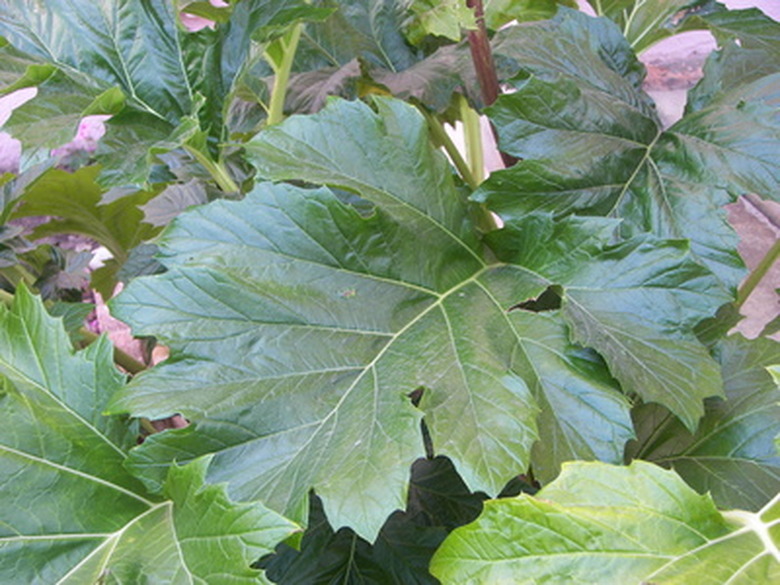How To Separate Elephant Ears
Elephant ear or taro (Colocasia spp.) is a tropical herb with large, showy leaves. In the north, it can be grown in large pots or directly in the garden bed, but the tubers must be dug up and stored indoors for the winter. Over time, plants can become crowded in their container or bed. At this point, separate elephant ears for the health of the plant. Divided tubers can be stored or replanted, as conditions and needs dictate.
Separating Elephant ear in the North
Step 1
Wait until the first frost. Leaves will turn brown and begin to die back.
- Elephant ear or taro (Colocasia spp.)
- In the north, it can be grown in large pots or directly in the garden bed, but the tubers must be dug up and stored indoors for the winter.
Step 2
Cut the plant back about 2 to 4 inches from the ground using pruning snips. Compost spent foliage.
Step 3
Use a garden spade or fork to lift the tubers. Carefully create a perimeter around the base of the plants, about 8 to 12 inches from the stem. Insert the spade or fork at a 45 degree angle and push the handle down to lift the tubers from the soil.
Step 4
Brush the soil from the tubers and trim the stems back to 1 or 2 inches. Allow the tubers to dry for 24 to 48 hours then wrap them in peat moss or vermiculite. Store in a cool, dry location where the temperature will not drop below freezing.
- Cut the plant back about 2 to 4 inches from the ground using pruning snips.
- Insert the spade or fork at a 45 degree angle and push the handle down to lift the tubers from the soil.
Step 5
Divide elephant ear tubers in late winter or early spring and plant indoors. Elephant ears can take up to four weeks to break dormancy, so this will allow the plants to get a good start on the growing season.
Step 6
Select the largest tuber sections. Look for slightly swollen areas on the tuber. These are the corms that will produce new growth. Use a sharp knife to cut sections that contain at least one corm.
Step 7
Plant sections in a well-drained potting mix. Keep the plants warm and well-watered.
- Divide elephant ear tubers in late winter or early spring and plant indoors.
- Use a sharp knife to cut sections that contain at least one corm.
Step 8
Wait until the weather has warmed sufficiently and after all danger of frost has passed. Move the plants to their new location and water regularly.
Separating Elephant ear in the South
Step 1
Divide crowded elephant ears by gently inserting a garden spade into the soil surrounding the plant. Dig 8 to 12 inches away from the stems to avoid damaging the tubers.
Step 2
Insert the spade beneath the plant at a 45 degree angle and lift the root mass out carefully.
Step 3
Lay the plant on its side in a shady location. Use your hands to pull apart the mass of tubers.
- Wait until the weather has warmed sufficiently and after all danger of frost has passed.
- Use your hands to pull apart the mass of tubers.
Step 4
Select the most robust of the divided plants and replant them quickly. Extra plants can be moved to a new location, planted in pots for future use or trimmed back, dried and stored.
Step 5
Water replanted elephant ears daily for three to four weeks.
Tip
Elephant ears are heavy feeders and benefit from a bi-weekly fertilization with a 10-10-10 water-soluble product. Poor growth is caused by cold temperatures, too little water or a lack of nitrogen.
Warning
Use care when cutting back elephant ears. The leaves contain a small amount of oxalic acid, a skin irritant.
Things Needed
- Pruning snips
- Garden spade or fork
- Sharp knife
